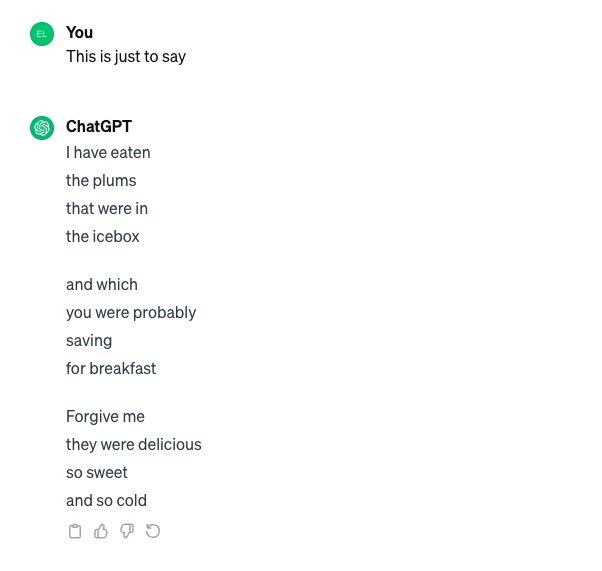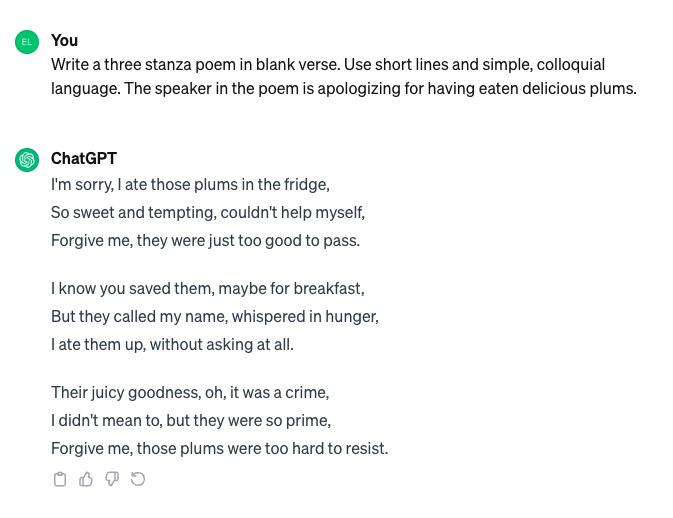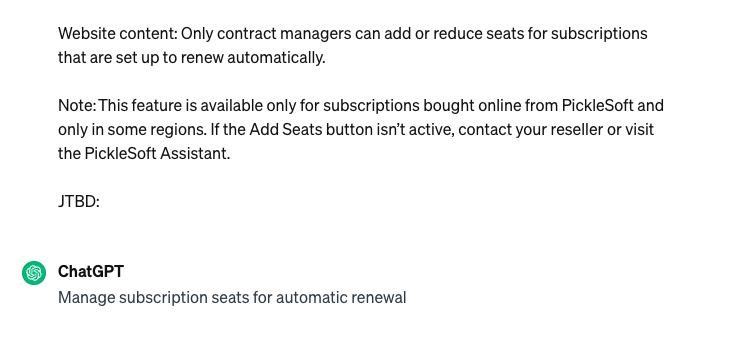If you’ve ever experimented with large language models (LLMs) like ChatGPT, you know how easy it is to generate passable content. Just type in some basic instructions and AI will spit out a bunch of grammatically correct, generally coherent copy on the topic you specify.
But the internet was already flooded with good-enough content even before generative AI came on the scene, and content marketers know that you can’t generate demand with content that’s just okay. The objective with AI content creation is to produce excellent prose, in your company’s voice and tone, in the format you need, incorporating all the right information and context, and free of factual errors.
This is where the concept of “prompt engineering” comes in. By optimizing your instructions, or prompts, to the LLM and crafting them just so, you can achieve the results you want. And prompt engineering has a lot in common with content strategy. People who know how to plan and write great content probably know how to tell an LLM to do it, too. Think of an LLM as a junior copywriter on your team: It’s not ready to tackle heavy-duty thought leadership, but with the right guidance, it can nail informational articles and repetitive content tasks.
By following a few simple prompt patterns, you can improve your results and create effective content with AI. We’ve distilled five of the most useful patterns for B2B content creators:
1. Nail Voice and Tone with the Persona Pattern
2. Avoid Hallucinations with Show-Your-Work Patterns
3. Teach AI What You Need with Few-Shot Prompting
4. Craft Long-Form Content with Outline Expansion
5. Get Repeatable Results with Program Patterns
How LLMs Work in AI Content Creation
To use patterns effectively, it helps to first understand how LLMs work. LLMs are essentially predictive engines: They predict the next word in a series based on patterns in their training data. When the LLM encounters a strong pattern, something that it has seen hundreds or thousands of times during training, it can generate extremely precise output. In this example, simply entering the first line of a famous poem is enough to get ChatGPT to recite the poem verbatim:

More often, though, the LLM is just generating something that it thinks is statistically probable—something that sounds like an average of all the content it has trained on. (This is also why generative AI isn’t a great tool for original thinking or groundbreaking thought leadership.)
In the above example, if you wanted ChatGPT to recite a William Carlos Williams poem, you could certainly spend a lot of time describing to the AI what that output should look like and hope it comes up with a close enough approximation. Or you could simply enter the first line of the poem and let it continue the pattern.

As you can see, tapping into patterns in your prompts is a powerful way to generate effective content. Here are five prompt patterns for effective AI content creation.
1. Nail Voice and Tone with the Persona Pattern
This is a fairly well-known trick at this point, but it’s effective, so we’re including it to illustrate just how powerful patterns can be. It’s also simple: Tell the LLM to act as, or to write in the style of, a particular persona. This could be a famous character or public figure, but it could also be a job title like a Senior Content Strategist, or even just a well-known personality type.
In our experiments, we’ve found specifying a persona to be far more effective than listing adjectives when trying to pinpoint a particular tone. What constitutes an “approachable” or “authoritative” tone is highly subjective (and probably not covered in the training data), but it’s harder to argue about how, say, a cybersecurity expert should sound.
Another situation where personas can be surprisingly effective: specifying content format. “Write a LinkedIn post” may sound like a straightforward instruction, but when we tried it with ChatGPT, it spit out wordy paragraphs that sounded more like a graduate thesis. However, “Act as a LinkedIn thought leader” worked nicely to produce exactly the sort of content you’d find on LinkedIn.
2. Avoid Hallucinations with Show-Your-Work Patterns
Much has been written about the dreaded LLM “hallucinations,” or outputs that are illogical or factually incorrect. (Some argue that these are better called “fabrications.”) Since LLMs are predictive engines, they generate output that sounds coherent; but if they don’t have the context needed, they may just make it up. And the consequences can be dire, as Google famously discovered when it demoed its AI chatbot, Bard.
To avoid these situations, ask the AI to show its work. By doing this, you can use the predictive nature of LLMs to your advantage: If you ask it to answer a question, it does so based on the context that’s been given so far. If you ask it to give its reasoning and then answer the question, that reasoning becomes part of the context that it’s working from.
One way to do this is straightforward: Simply tell the AI to “Explain your reasoning before you answer the question.” Another way is to begin by asking it to break the problem down into steps. For example, instead of asking AI to write a blog post on machine learning, have it first describe the steps it would take to plan and write the post. This request not only helps the LLM structure its output, it also gives you a chance to check its assumptions before you proceed to content generation.
Advanced generative AI platforms like ChatGPT+ that refer to outside sources of information can now build this function in by showing their sources in real time, but they’re far from perfect. If the AI picks up on a source that’s unreliable or inaccurate, its output will contain the same flaws. Always check your output!
3. Teach AI What You Need with Few-Shot Prompting
Sometimes the best prompt is no prompt. If an LLM can detect a pattern in your input, it will pick up on and continue it without needing explicit instructions. This means that you can feed it examples and then let it finish a task without intervention.
Let’s say you have a bunch of web pages, and you need to determine the top user task, or job-to-be-done (JTBD), on each page. (This might come up in the course of completing a content audit or scorecard.) Instead of telling the AI how to find the top task, try giving it labeled examples of website content and the corresponding JTBDs. After feeding it several examples, you can enter just the content, and it will respond with the JTBD.

The best part? This pattern can be applied to any kind of content analysis or adaptation that requires an input and an output. Content tagging, converting blog posts into social media posts—the possibilities are endless.
4. Craft Long-Form Content with Outline Expansion
As any content marketer knows, good long-form content doesn’t just roll off the keyboard in a single burst of inspiration, even when you’re ChatGPT.
To get an LLM to follow your editorial guidance, have it start by developing a numbered outline. (As with show-your-work patterns, this is a good place to pause and make sure you’re happy with the overall direction before proceeding.) You can then ask the LLM to write content for specific sections (referencing the numbered bullets), and you can have it revise a section as many times as needed without affecting the rest of the content. Then, once the content is in a good place, the numbering makes it easy to assemble all the pieces in the right order.
This step takes more time and effort than simply dashing off some instructions and publishing the results. But again, we’re talking about quality content here. If we think of ChatGPT and other LLMs as junior copywriters who forget to fact-check, we know we shouldn’t publish that copywriter’s work unvetted. Don’t do it for AI, either. Working from an outline is the easiest way to replicate the editorial back-and-forth that good content requires.
5. Get Repeatable Results with Program Patterns
Here, we take inspiration from outside the world of content marketing, with the meta language creation and menu actions patterns detailed by Vanderbilt computer science professor Dr. Jules White in his course Prompt Engineering for ChatGPT, available on Coursera. (All the patterns in this post owe a lot to Dr. White’s course, which we highly recommend and are even certified in!)
These two patterns are based on the principles of computer science. The meta language creation pattern takes its inspiration from the concept of programming languages. It involves creating a shorthand for common tasks that you want the LLM to perform. The menu actions pattern is based on the idea of a computer menu, or a set of options that users can choose from to execute different functions.
Sounds complicated, right? It’s actually as simple as explaining your shortcuts for what you want the LLM to do. Say you’ve got a popular blog post series that follows a particular format. You can prompt the LLM by saying, “When I say, ‘Write a blog post on <TOPIC>,’ you should write a 1,000-word post in the following format.” Then go on to detail the format, including voice and tone, headers to use, any important context, and the CTA to include at the end. Now, whenever you open that chat session, you need only say, “Write a blog post on information architecture,” and the LLM will write the post in the style and format you need, without further instructions.
The real power of these patterns, though, is in organizational content operations. If you have a prompt library, you can save your meta language or menu actions prompt and paste it at the start of a new conversation to save time. And if your prompt library is shared across your organization, then all your content writers can use it to get standardized results.
Get Help with Your AI Prompt Engineering
When it comes to straightforward content like informational articles, AI offers a powerful way to scale your content production. But to achieve high-quality content that gets its facts straight, you need effective AI prompt engineering. If you’re thinking about experimenting with AI content creation, we’re here for you. Work with Tendo’s team of AI-certified content professionals to craft prompts that get results. Get in touch










